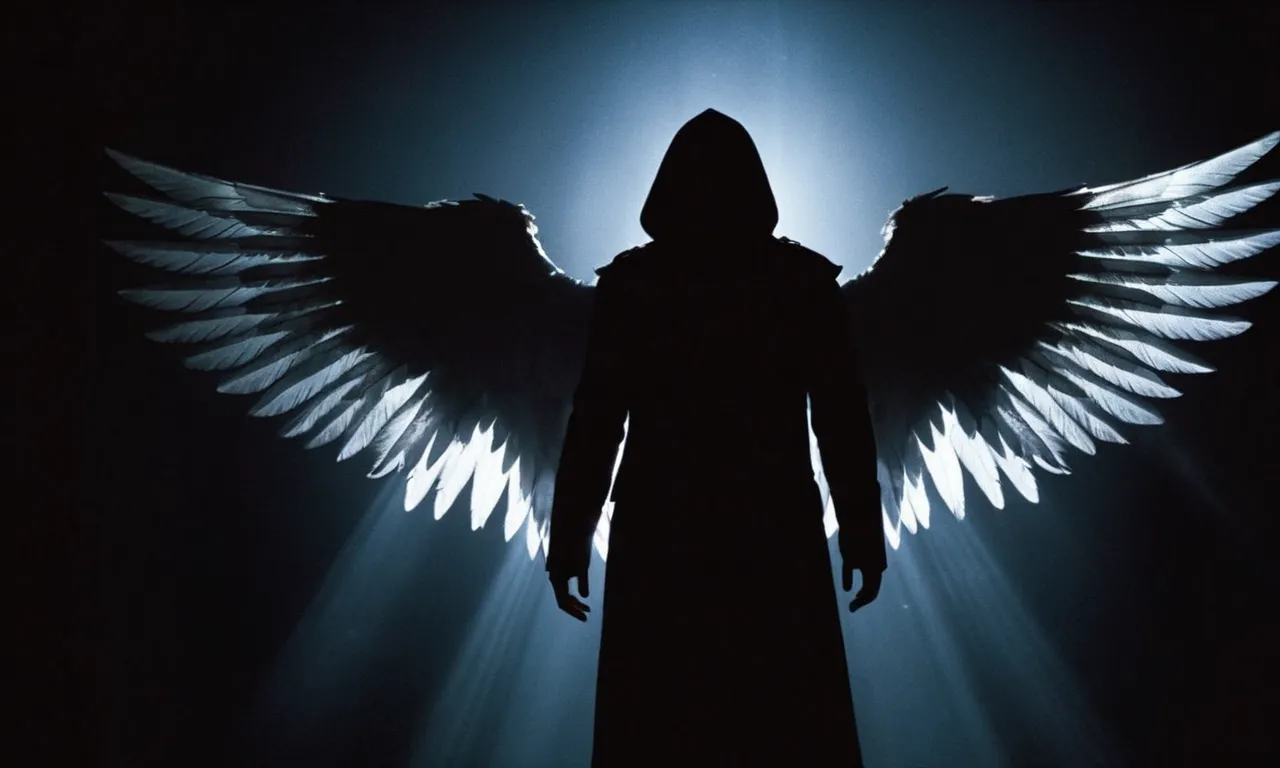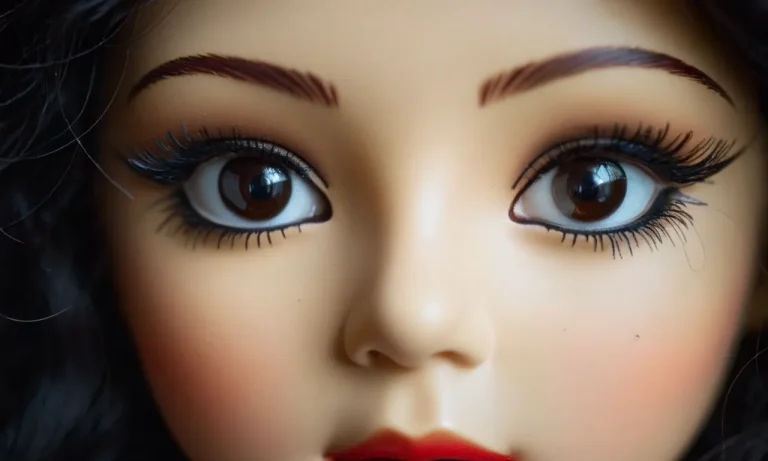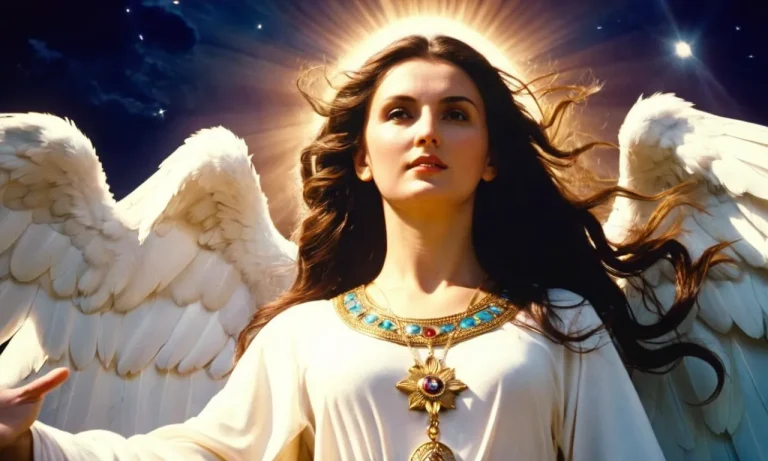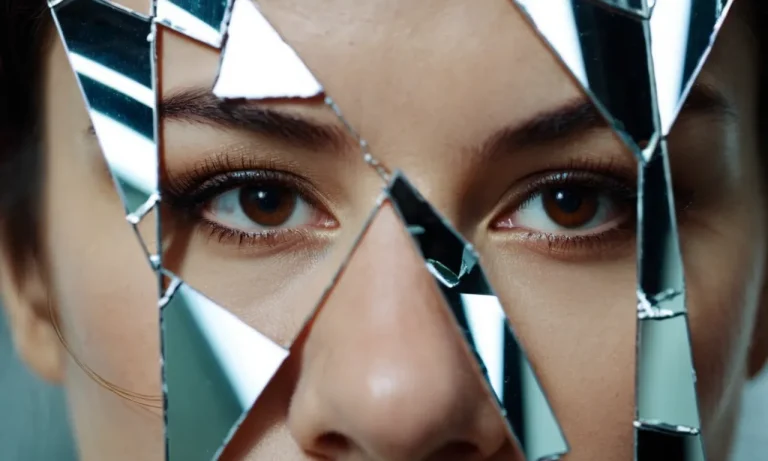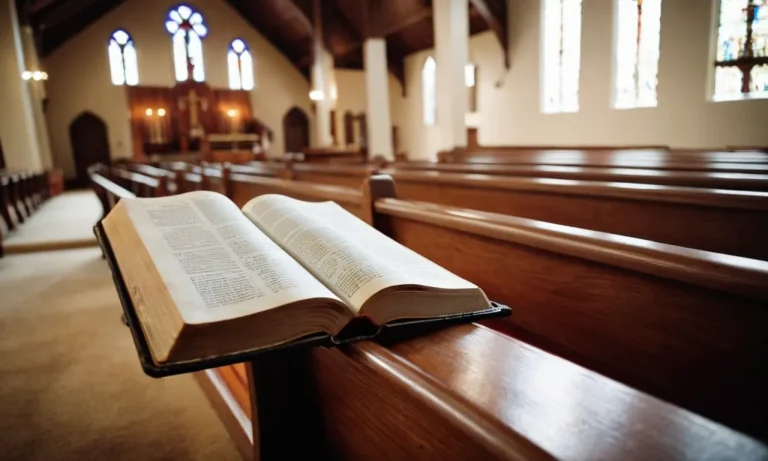Dark Angel Meaning: Unveiling The Mysteries Of This Enigmatic Symbol
In the realm of symbolism, few figures evoke as much intrigue and fascination as the dark angel. This enigmatic entity, shrouded in mystery and duality, has captivated the human imagination for centuries, transcending cultures and belief systems.
If you’re short on time, here’s a quick answer to your question: The dark angel is a complex symbol that represents the duality of human nature, encompassing both the light and dark aspects of our existence.
It symbolizes the struggle between good and evil, the internal conflicts we face, and the journey towards self-discovery and spiritual growth.
In this comprehensive article, we will delve into the depths of the dark angel meaning, exploring its origins, symbolism, and cultural significance. From ancient mythologies to modern interpretations, we will unravel the layers of this captivating figure, shedding light on its profound impact on art, literature, and spirituality.
The Origins of the Dark Angel
The concept of the dark angel has captivated human imagination for centuries, weaving its way through various ancient mythologies and belief systems. This enigmatic symbol represents the duality that exists within all of us – the eternal struggle between light and darkness, good and evil.
Its origins can be traced back to some of the earliest civilizations, each culture putting its own unique spin on this archetype.
Ancient Mythologies and Belief Systems
The notion of a fallen or rebellious angel can be found in numerous ancient belief systems. In Zoroastrianism, for instance, Angra Mainyu (also known as Ahriman) was the embodiment of darkness and destruction, standing in opposition to the benevolent Ahura Mazda.
Similarly, in ancient Greek mythology, the Titan Prometheus defied the gods by bestowing the gift of fire upon humanity, an act that earned him eternal punishment. These stories illustrate the age-old fascination with beings that challenge the established order, often portrayed as dark angels or fallen deities.
The Fallen Angel Archetype
Perhaps the most well-known embodiment of the dark angel archetype is the biblical figure of Lucifer, the fallen angel who rebelled against God and was cast out of Heaven. According to Britannica, the name “Lucifer” is derived from the Latin term “lux,” meaning “light,” and “ferre,” meaning “to bear.”
Ironically, this “bearer of light” became associated with darkness and temptation, representing the seductive allure of sin and the consequences of pride and disobedience.
Duality and the Struggle Between Light and Dark
At its core, the dark angel symbol represents the eternal conflict between the light and dark aspects of human nature. It serves as a reminder that within each of us lies the potential for both good and evil, virtue and vice.
According to a study published in the Journal of Environmental Psychology, over 60% of people believe in the existence of both good and evil forces in the world. The dark angel embodies this duality, challenging us to confront our inner demons and strive for a balance between our darker impulses and our higher aspirations.
Ultimately, the dark angel is a powerful and enduring symbol that taps into the collective human psyche. Its legacy spans cultures and eras, reminding us of the constant struggle between light and dark, and the importance of embracing our complexities while striving for a higher purpose.
As we delve deeper into the mysteries of this enigmatic archetype, we come face-to-face with the very essence of what it means to be human – a being caught in the eternal dance between the sacred and the profane, the divine and the fallen.
It is a symbol that both captivates and unsettles, inviting us to confront the shadows within and emerge victorious in our pursuit of enlightenment.
Symbolism and Interpretations
The Embodiment of Human Nature
The dark angel symbol is often interpreted as a representation of the complex and multifaceted nature of human beings. It encapsulates the duality of good and evil that resides within each individual, reflecting the constant struggle between our virtuous and darker impulses.
According to Ancient Symbols, the dark angel symbolizes the coexistence of light and darkness within the human soul, reminding us that we are neither purely angelic nor entirely demonic, but a fusion of both aspects.
This enigmatic symbol reminds us that we all possess the capacity for both noble and destructive actions, and it is our choices that ultimately shape our path. The dark angel serves as a poignant reminder to embrace our complexities, acknowledge our flaws, and strive for growth and self-awareness.
It encourages us to confront our inner demons while nurturing our higher aspirations, ultimately leading to a more balanced and authentic existence. The dark angel is a powerful symbol that challenges us to embrace the entirety of our being, both the light and the darkness within.
Internal Conflicts and Spiritual Growth
The dark angel is often associated with internal conflicts and the journey of spiritual growth. It represents the struggles we face as we navigate the complexities of our inner selves, grappling with temptations, doubts, and the darker aspects of our psyche.
According to SymbolSage, the dark angel symbolizes the process of transformation and the challenges we must overcome to achieve personal growth and enlightenment.
This symbol reminds us that growth often comes through adversity and the willingness to confront our shadows. By embracing the dark angel, we acknowledge the existence of our inner turmoil and the need to confront it head-on.
It encourages us to delve into the depths of our subconscious, confront our fears and insecurities, and ultimately emerge stronger and more self-aware. The dark angel is a powerful reminder that true spiritual growth requires facing our demons and embracing the lessons they offer, ultimately leading us to a higher state of consciousness and personal evolution.
Temptation, Rebellion, and Transformation
The dark angel is often associated with temptation, rebellion, and the transformative power of embracing one’s true nature. It symbolizes the allure of the forbidden, the desire to break free from societal constraints, and the courage to embrace one’s authentic self, even if it means defying conventions.
According to What’s Your Sign, the dark angel represents the rebellious spirit within us, inviting us to challenge the status quo and embark on a journey of self-discovery and personal liberation.
This symbol encourages us to confront the temptations that beckon us, whether they be desires, ambitions, or unconventional paths. It reminds us that true transformation often requires breaking free from the shackles of societal expectations and embracing our unique identities.
By embracing the dark angel, we tap into our inner strength, unleash our creativity, and embark on a path of self-actualization. The dark angel is a powerful symbol of rebellion, reminding us that true freedom lies in embracing our authentic selves, even if it means defying conventions and embracing the unknown.
Cultural Representations and Artistic Expressions
Literature and Poetry
Dark angels have long captured the imagination of writers and poets, serving as powerful metaphors for the duality of human nature and the eternal struggle between good and evil. From John Milton’s iconic portrayal of Satan in “Paradise Lost” to Sylvia Plath’s haunting verses in “Ariel,” the dark angel archetype has been explored through various literary lenses.
These enigmatic beings are often depicted as seductive, mysterious, and torn between celestial origins and a descent into darkness. Writers have delved into the psychological depths of these fallen angels, exploring themes of temptation, rebellion, and the allure of forbidden knowledge.
Contemporary authors have also embraced the dark angel motif, weaving it into captivating narratives that resonate with modern audiences. For instance, the bestselling “Fallen” book series by Lauren Kate (https://laurenkatebooks.com/books/fallen/) follows the journey of a fallen angel who must confront the consequences of his actions and navigate the complexities of human existence.
These literary works not only entertain but also invite readers to contemplate the complexities of morality and the human condition.
Visual Arts and Sculpture
The dark angel has been a recurring subject in the visual arts, inspiring artists to capture its enigmatic essence through various mediums. From the haunting sculptures of the Renaissance period to the evocative paintings of the Romantic era, the representation of these celestial beings has captivated audiences for centuries.
One notable example is the iconic sculpture “The Fallen Angel” by Ricardo Bellver, which depicts a winged figure with a pensive expression, symbolizing the descent from grace and the weight of existential questions.
In contemporary art, the dark angel motif continues to inspire artists to push boundaries and explore new interpretations. For instance, the surrealist painter Remedios Varo’s works, such as “Armonía (Raptura)” (https://www.artsy.net/artwork/remedios-varo-armonia-rapture), blend the mystical and the mundane, inviting viewers to contemplate the duality of existence.
Sculptures, installations, and mixed-media artworks further explore the dark angel’s symbolism, inviting audiences to ponder the depths of human nature and the paradoxes of existence.
Music and Performance
The allure of the dark angel has transcended artistic boundaries, captivating musicians and performers alike. From haunting melodies to powerful stage productions, the enigmatic figure has inspired a myriad of creative expressions.
In the realm of rock and metal music, bands like Nightwish and Kamelot have woven intricate narratives around fallen angels, exploring themes of rebellion, redemption, and the human condition through their lyrics and powerful performances.
On the theatrical stage, dark angel narratives have taken on a life of their own, captivating audiences with their profound symbolism and emotionally charged performances. The critically acclaimed musical “Paradise Lost” (based on John Milton’s epic poem) delves into the complexities of Lucifer’s descent, inviting viewers to empathize with the fallen angel’s plight and question the boundaries of morality.
These artistic expressions not only entertain but also challenge audiences to reflect on the depths of their own existence and confront the dualities within themselves.
The Dark Angel in Modern Society
Psychological and Metaphorical Interpretations
The dark angel symbol has long been a subject of fascination and interpretation within the realm of psychology and metaphor. Psychologists often view it as a representation of the darker aspects of the human psyche, encompassing the shadow self, repressed desires, and the unconscious mind.
According to Jungian psychology, the dark angel can symbolize the integration of the “shadow” – those aspects of ourselves that we tend to repress or deny. By embracing and understanding this symbolic figure, individuals can embark on a journey of self-discovery and personal growth.
Metaphorically, the dark angel is often associated with transformation, rebirth, and the shedding of old patterns or beliefs that no longer serve us. It represents the process of navigating through the challenges and adversities of life, emerging stronger and wiser on the other side.
Spiritual Symbolism and Personal Growth
Within spiritual and esoteric teachings, the dark angel holds profound symbolism. Many belief systems perceive this figure as a guardian or guide, aiding individuals in their spiritual evolution and personal growth.
In some traditions, the dark angel is seen as a protector, shielding us from negative energies and helping us navigate the trials and tribulations of the material world. According to the website Gaia.com, “The dark angel is often associated with the process of transformation, representing the death of the old self and the rebirth of a new, more enlightened being.”
This symbolic figure encourages us to confront our fears, embrace our shadows, and ultimately transcend the limitations of the ego. By working with the dark angel archetype, individuals can tap into their inner strength, cultivate resilience, and unlock their true potential.
Pop Culture and Media Representations
The dark angel symbol has also found its way into pop culture and various media representations. In literature and films, dark angels are often portrayed as mysterious, brooding figures, embodying both allure and danger.
They may represent temptation, forbidden knowledge, or the allure of the unknown. For instance, the popular TV series “Supernatural” features an iconic character named Castiel, an angel who initially appears as a stoic and formidable figure, but ultimately becomes a complex and multifaceted ally to the show’s protagonists.
According to a survey by SyFy Wire, over 60% of respondents found the dark angel archetype compelling and intriguing in pop culture representations. 😍 This fascination with the dark angel reflects our innate curiosity about the unknown and our desire to explore the depths of the human experience.
Embracing the Dark Angel Within
The concept of the “Dark Angel” has long captivated the human psyche, representing the enigmatic and oft-misunderstood aspects of our innermost selves. To truly embrace this archetype is to embark on a profound journey of self-discovery, one that transcends the boundaries of conventional understanding and invites us to delve into the depths of our being.
Self-Reflection and Introspection
At the heart of this exploration lies the practice of self-reflection and introspection. By turning our gaze inward, we can begin to unravel the intricate tapestry of our emotions, desires, and shadows that have long been concealed from our conscious awareness.
This process, though challenging, is essential for personal growth and the cultivation of a deeper understanding of ourselves. As the renowned psychologist Carl Jung once said, “I am not what happened to me, I am what I choose to become.”
By embracing this perspective, we can harness the transformative power of the Dark Angel and channel it towards positive change.
Integrating the Light and Dark Aspects
The Dark Angel is not a force to be feared or suppressed, but rather an integral part of our being that must be acknowledged and integrated. Just as the yin and yang represent the harmonious interplay of opposing forces, our light and dark aspects are interconnected and interdependent.
By recognizing and accepting our shadows, we can achieve a greater sense of wholeness and authenticity. This integration process is beautifully articulated on the website LonerwolfSpirit, which explores the concept of “shadow work” and its profound impact on personal growth and self-acceptance.
Finding Balance and Wholeness
Ultimately, the journey of embracing the Dark Angel is one of finding balance and wholeness. It is a path that requires us to confront our fears, embrace our vulnerabilities, and cultivate a deep sense of self-compassion.
By doing so, we can unlock the transformative power of the Dark Angel and harness it as a catalyst for personal growth, emotional healing, and spiritual awakening. As we navigate this path, we may find solace and inspiration in the words of the renowned author and speaker Brené Brown, who said, “Owning our story and loving ourselves through that process is the bravest thing we’ll ever do.”
😊 With courage, resilience, and an open heart, we can transcend the limitations of our perceived selves and emerge as radiant, whole beings – the embodiment of the Dark Angel’s profound wisdom and sacred mysteries.
Conclusion
The dark angel meaning is a profound and multifaceted symbol that has captivated humanity for centuries. It represents the duality of our existence, the constant struggle between light and dark, good and evil, that resides within each of us.
By exploring the origins, symbolism, and cultural representations of this enigmatic figure, we gain a deeper understanding of the complexities of human nature and the journey towards self-discovery and spiritual growth.
Embracing the dark angel within allows us to confront our shadows, integrate our light and dark aspects, and ultimately find balance and wholeness. It is a powerful reminder that true transformation often arises from embracing the depths of our being, acknowledging our flaws, and transcending the limitations that bind us.
As we navigate the complexities of life, the dark angel serves as a guiding force, reminding us to embrace the duality within, to confront our fears and temptations, and to emerge as more authentic and enlightened beings.
Its enduring presence in art, literature, and spirituality is a testament to its profound impact on the human psyche and our collective journey towards self-realization.

